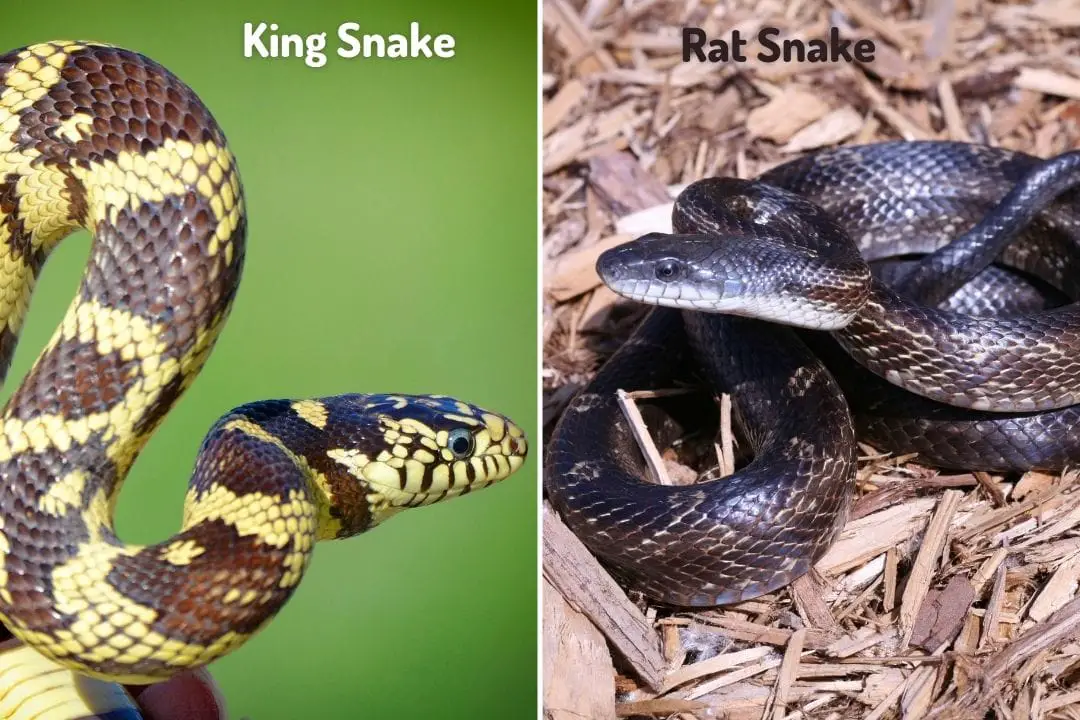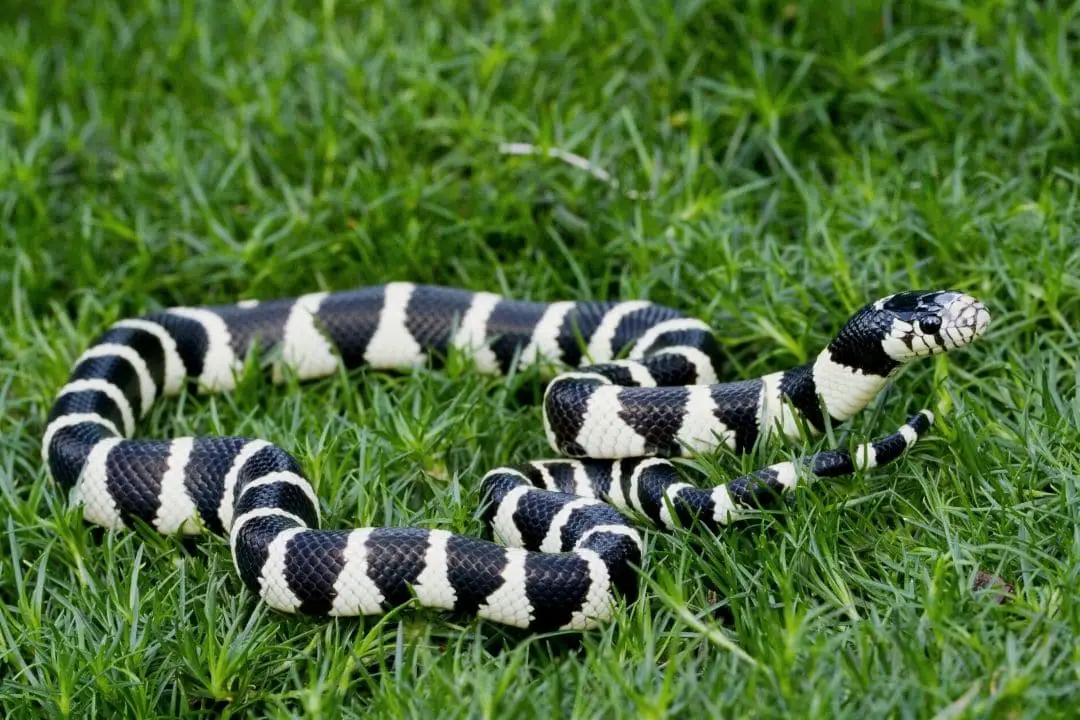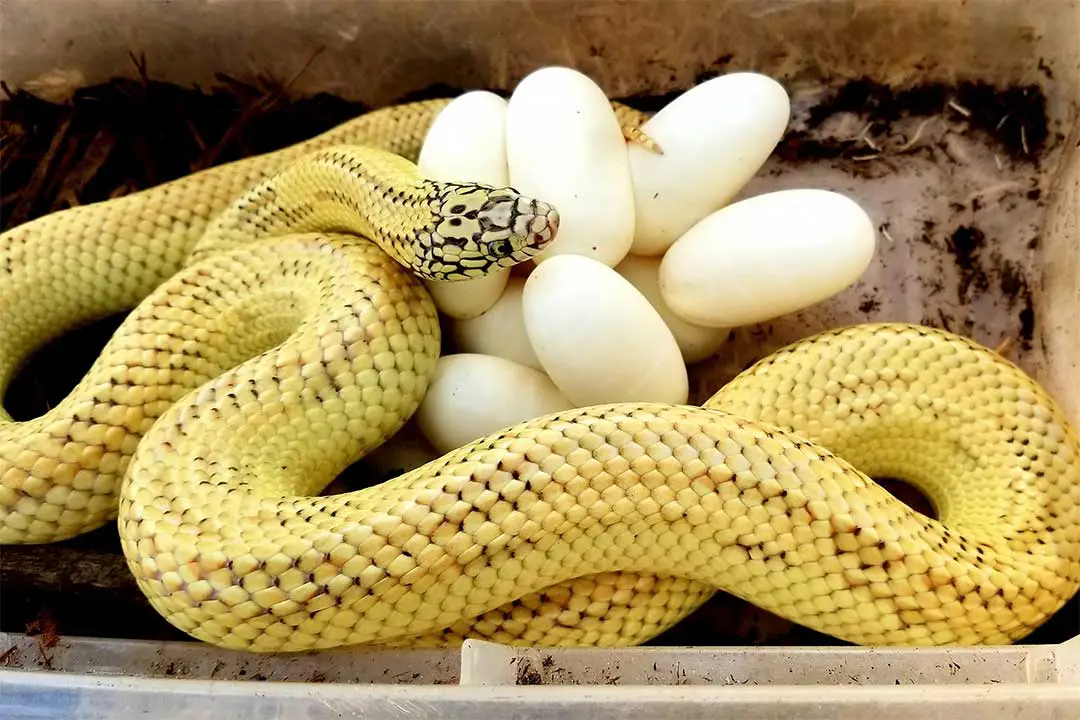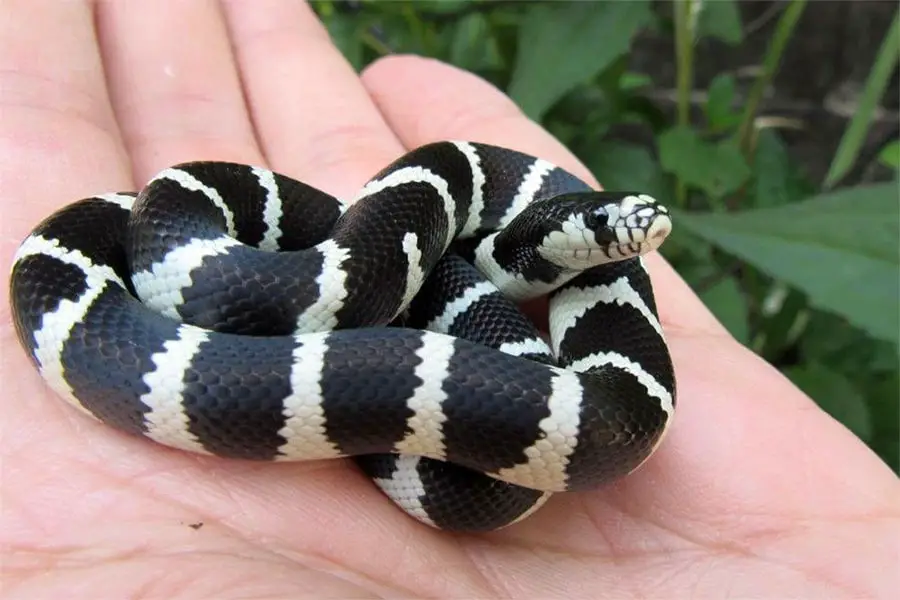Kingsnakes (genus Lampropeltis) share their habitat with rat snakes in much of the United States.
The New World rat snakes are more closely related to kingsnakes than they are to the Old World rat snakes.
They were once all considered to be the same but a DNA analysis in 2002 placed clarified the relations of the various genera called rat snakes.
This article will go over some differences in general since many species can carry either common name.
1. Diet
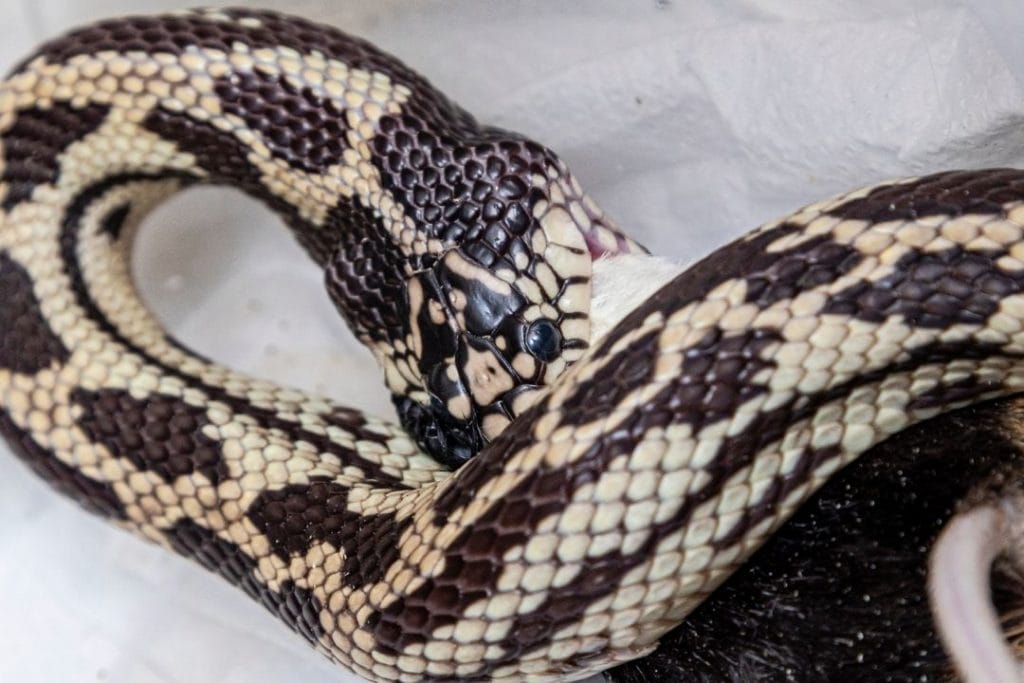
Rat snakes are named for their preference for rodents. Many species are found near human settlements. They eat the rodents that come to eat grain or shelter in human buildings.
Some species will also prey on birds or amphibians. Some will also eat eggs from various species. Kingsnakes have a similar diet in the wild.
They are generalists and will eat nearly anything available.
The big difference is that kingsnakes will eat other snakes. The king in their name refers to this habit of eating other snakes.
Kingsnakes are known for eating snakes like black racers, corn snakes, rat snakes, and even rattlesnakes. They will also practice cannibalism outside of the breeding season.
Kingsnakes have a unique method of curving the spine of snakes they eat. This lets them eat snakes that are the same length or longer.
This looks much like an accordion. A kingsnake that has eaten a large snake will have a series of lumps going down its body.
2. Scales
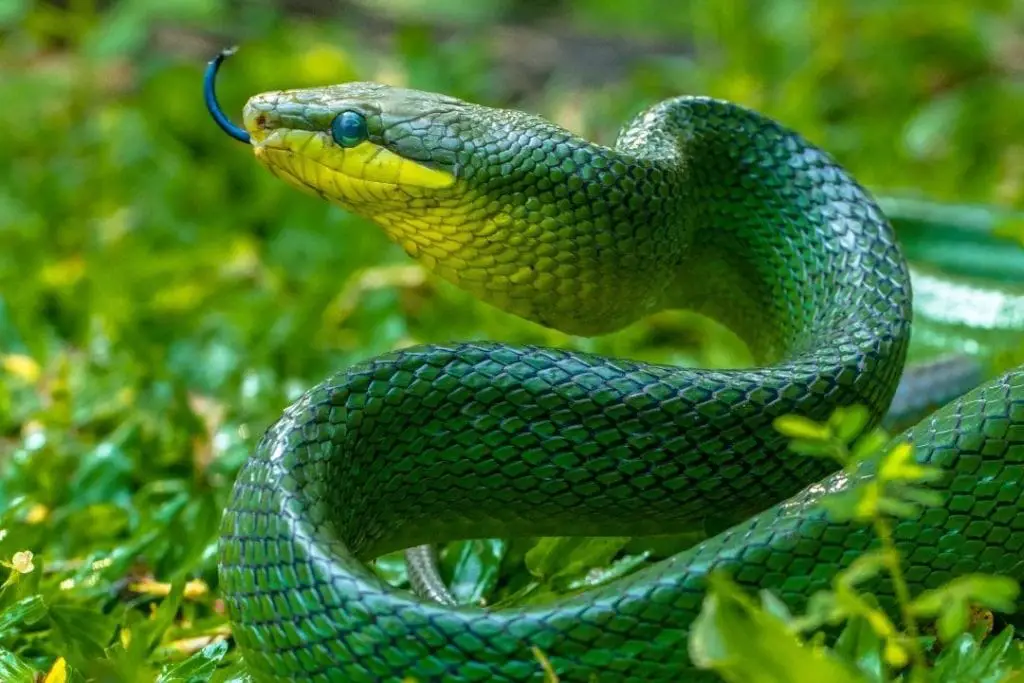
Rat snakes as a whole have keeled scales. This is partly what caused them to be grouped. Kingsnakes have smooth and shiny scales.
The name of the genus, Lampropeltis, means “shiny shields” in Greek. This refers to the shiny and well-defined scales.
3. Strength
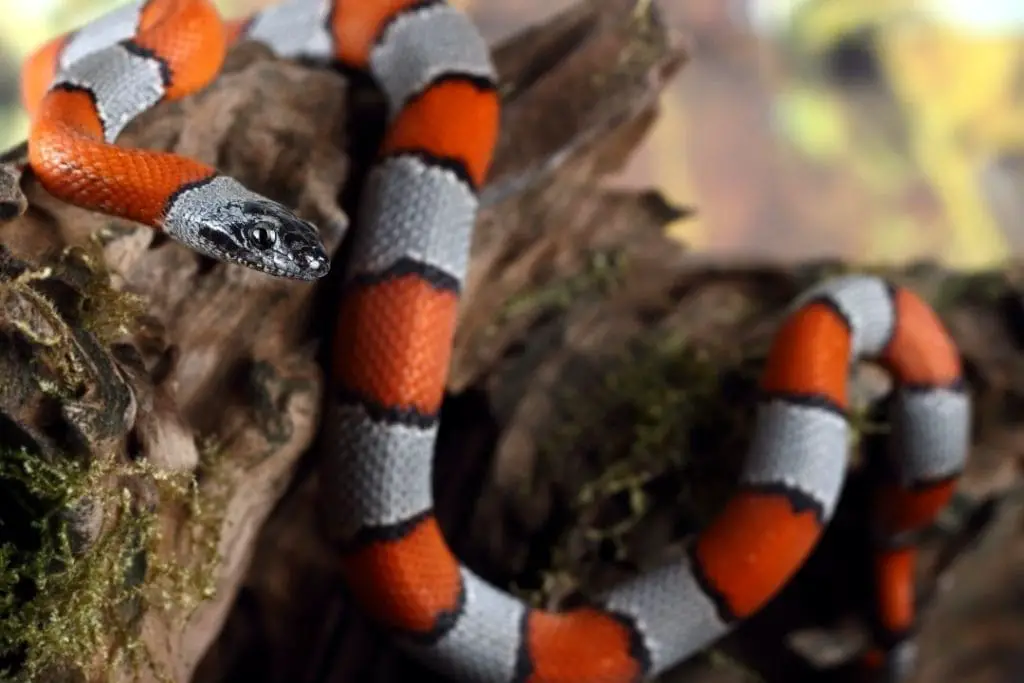
Both rat snakes and kingsnakes are constrictors. Rat snakes typically prey on animals that need high levels of oxygen. This means that constricted prey is easier to kill by cutting off blood flow.
Kingsnakes are notably stronger constrictors than a typical rat snake. This is theorized to be because they eat reptiles. Reptiles can withstand periods of lower oxygen availability.
This means that a constrictor needs to be stronger to cut off blood flow and starve its brain of oxygen. Remember, constriction is primarily used to cut off blood flow rather than suffocate prey.
4. Venom
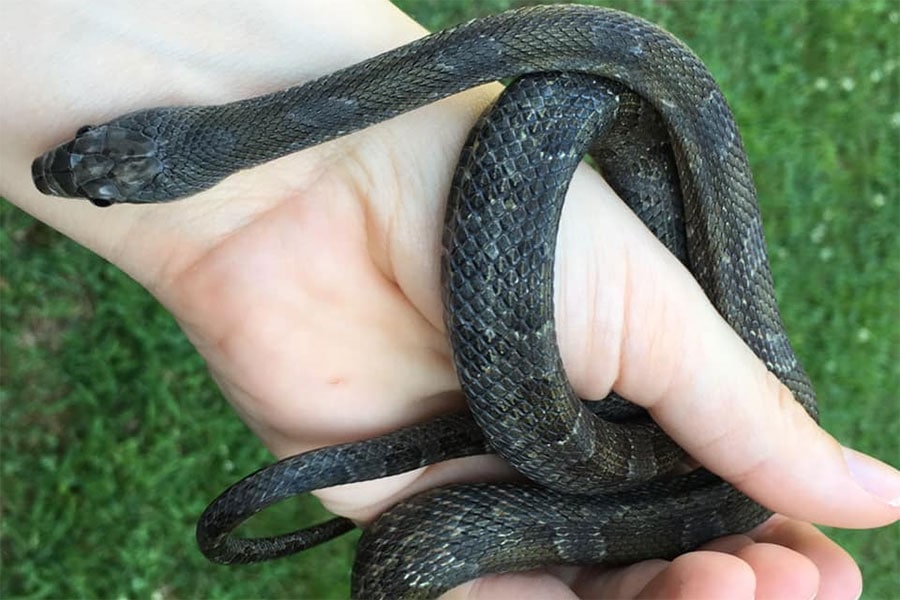
All kingsnake species are currently considered to be non-venomous. This is not necessarily true for rat snakes.
While the New World species like the corn snake are considered to be non-venomous, some of the Old World species have been proven to have venom.
The amount is negligible. It is not dangerous to humans.
Since colubrids like rat snakes do not have specialized fangs, they need to chew on prey to inject any toxins. The amount is not enough to cause harm to humans.
5. Appearances
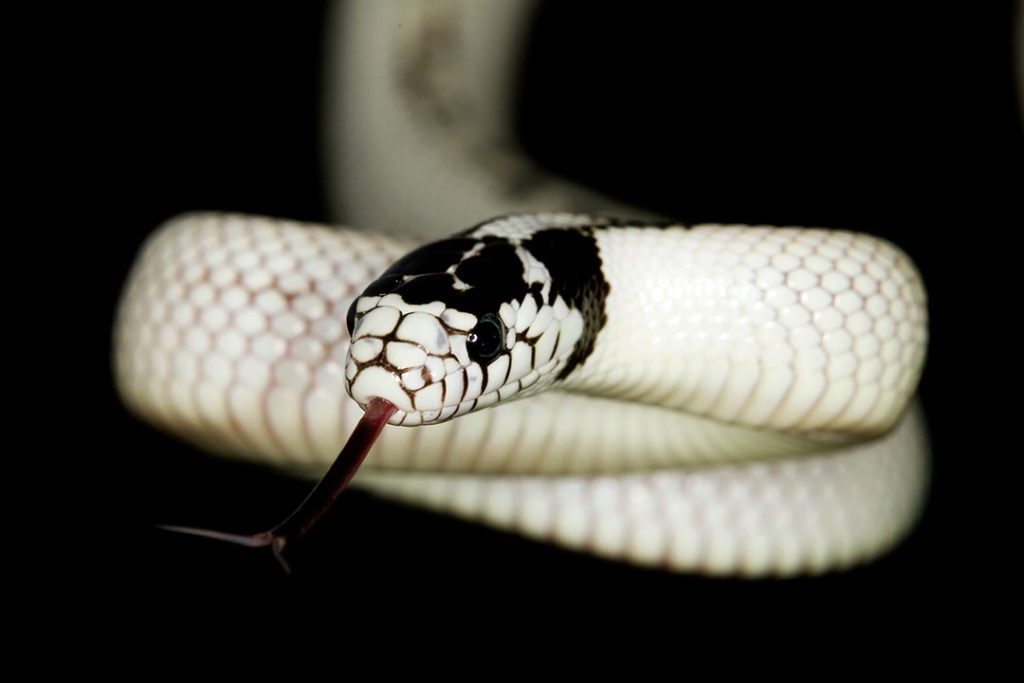
Since rat snakes are such a wide group, it is hard to say a general appearance. Most rat snakes share a wedge-shaped head. They can be gray, black, red, brown, yellow, or even black and white.
The exact color and pattern will depend on the species. Kingsnakes are described as sharing a spoon-shaped head. They frequently have bold colors that can include solid black, black and white striped, black and yellow, brown, and red.
Some like the scarlet kingsnake use Batesian mimicry to copy the appearance of the venomous coral snake.
Most species like the california king snake have a bold coloration that can help break up their outline in the brush. Many rat snakes have a duller appearance that helps them hide from predators.
6. Behavior
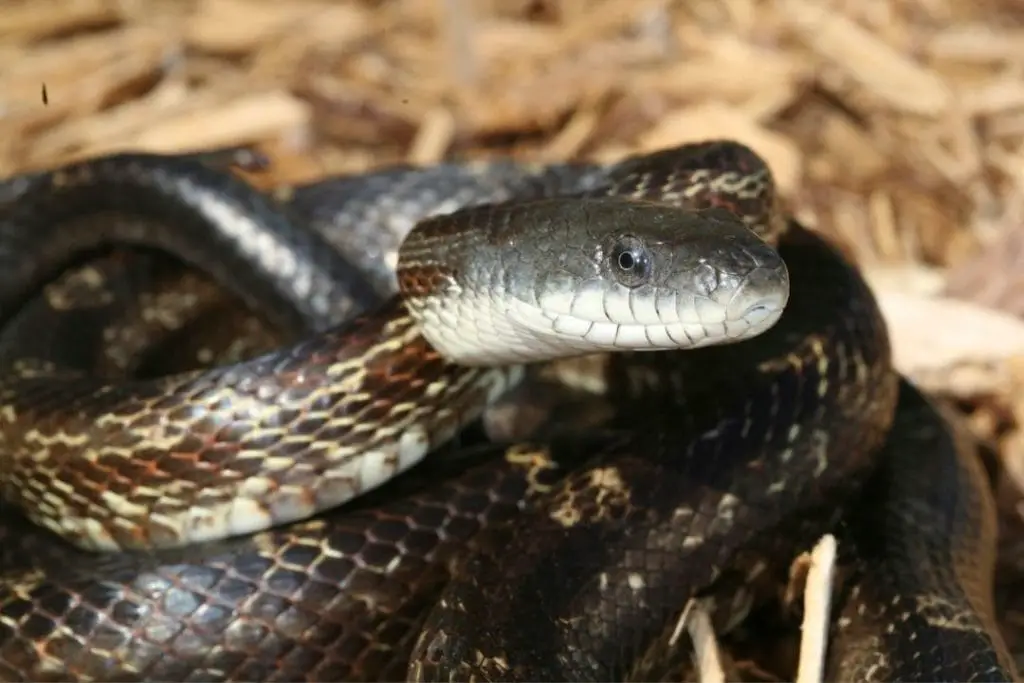
There are several differences between kingsnakes and rat snakes. Even if you compare the more closely related New World rat snakes with kingsnakes, you will note several differences.
First, kingsnakes are almost entirely terrestrial in all species. Many rat snakes are semi-arboreal.
It isn’t unusual to find rat snakes climbing trees to look for food. Rat snakes can be nocturnal during warm weather, but it isn’t unusual to see rat snakes during the day.
They are bolder snakes in general and will frequently be seen basking or hunting. Kingsnakes are rarely spotted. In most of their range, kingsnakes are nocturnal.
Populations in warm areas like California may have some snakes appear during the day.
However, kingsnakes are much shyer and prefer to hide under rocks or logs. The vast majority of kingsnake species are docile. They tame down with handling and make good pets.
Some species are slightly more likely to bite, but it mostly comes down to the personality of individual snakes.
Rat snakes have more variety, one of the most famous being the black rat snake. Some species are nervous and likely to bite. Others like the corn snake are docile and make wonderful pets. Be sure to do your research on the exact species of rat snake so you know what to expect.
7. Hunting Behavior
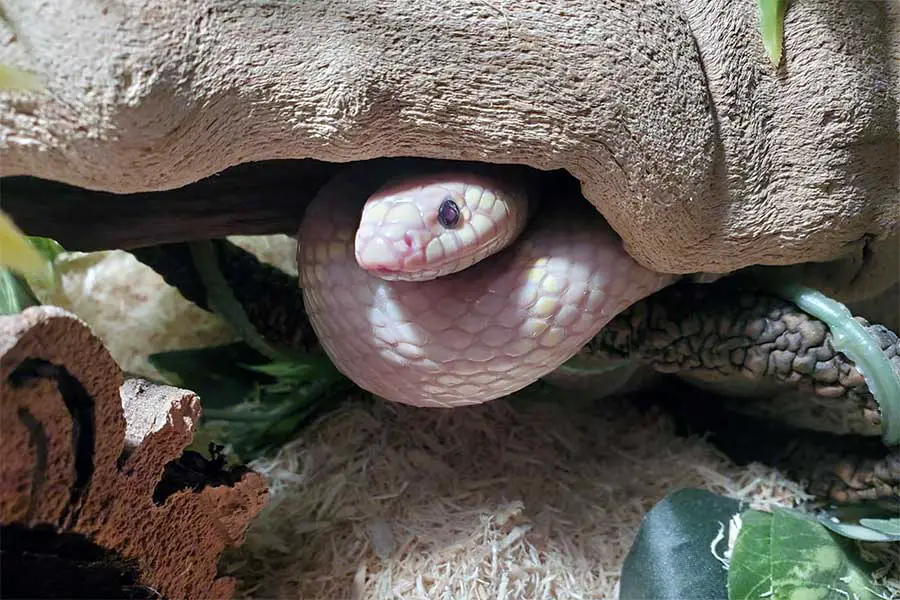
Rat snakes as a group have a wide range of hunting behaviors. Some will ambush prey while others actively hunt for a likely meal.
Rat snakes have an interesting habit compared to other snake species. They will sometimes keep hunting after consuming a meal.
This is because the snake’s scent is covered up by the scent of the prey. This means it may have more luck in catching prey. Kingsnakes are almost universally active hunters.
They will typically eat one prey item and may only eat a few times a month.
8. Size
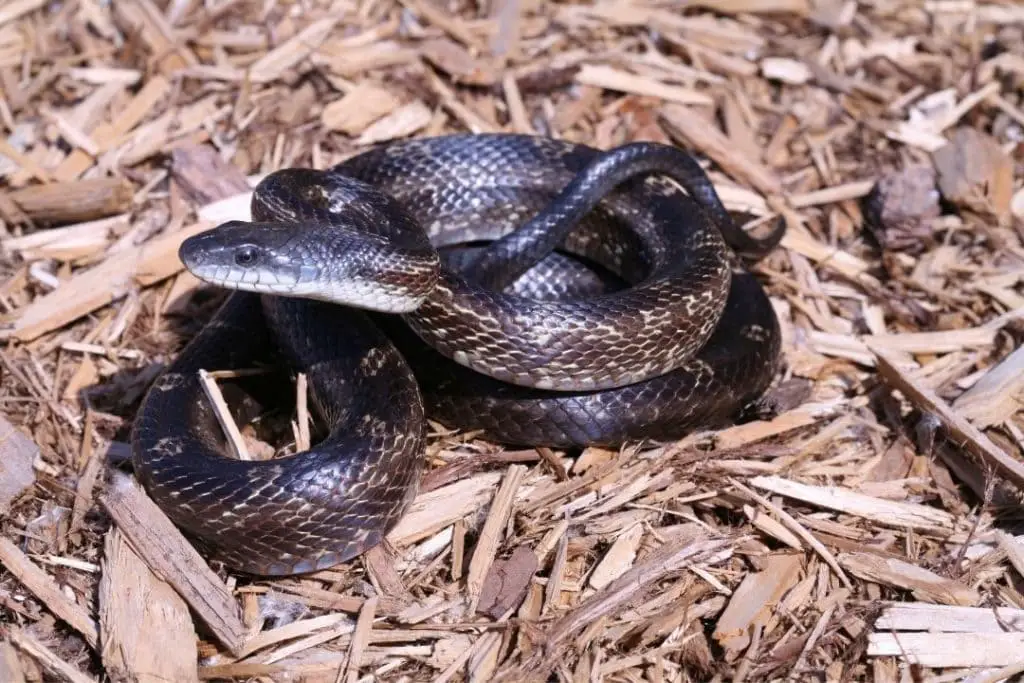
Most kingsnake species will stay under 6 feet. Some species like the California kingsnake rarely top 4 feet and the scarlet kingsnake rarely makes it past 2 feet long.
Rat snakes have more variety. Some species can get over 10 feet, but 4-6 feet is more common for most species. Be sure to check how large your rat snake may get.
They need an enclosure that is at least the length of the snake.
9. Lifespan
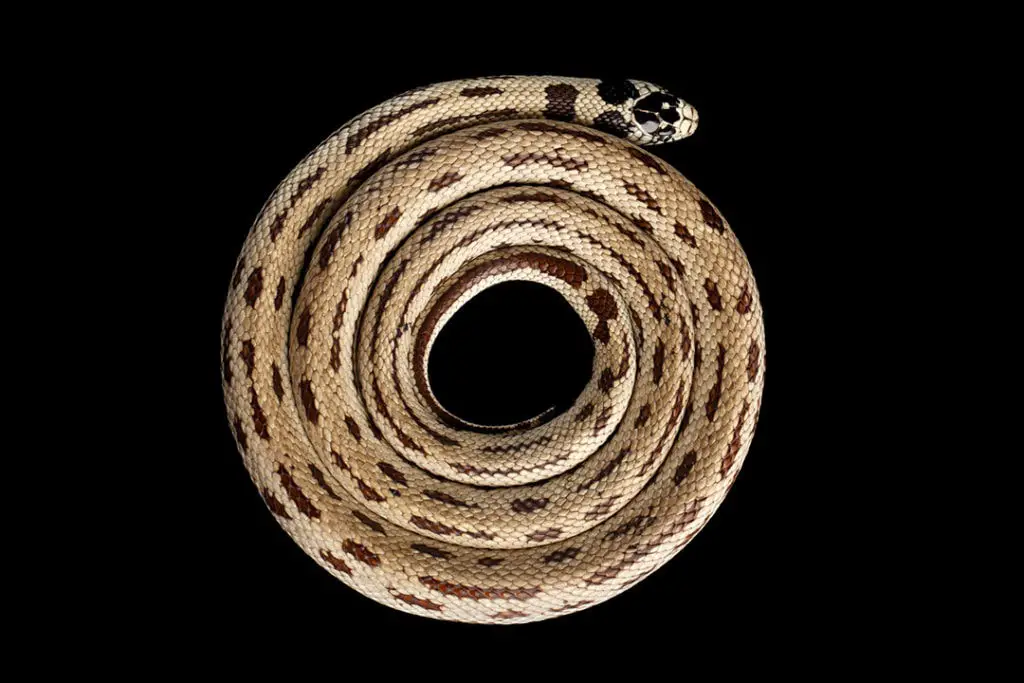
Kingsnakes can live very long lives in captivity. A well-cared-for snake can live to be over 30 years.
This is true of most species. Rat snakes can live for around 20 years, but this depends on the species and how well they are cared for. Wild lifespan is not known but is generally assumed to be under 15 years for most snake species.
10. Reproduction

As colubrids, both rat snakes and kingsnakes lay eggs. They also share a lack of parental care. The big difference is in the number of eggs and the size of the hatchlings.
Kingsnakes can have a wide range of clutch sizes. They may lay 3-24 eggs in secluded areas like logs or debris. Rat snakes do have a range that depends on the exact species.
They can lay 12-20 eggs in hidden areas. Kingsnake hatchlings are typically 9-12 inches at hatching for most species. Rat snakes can be 13 inches at hatching for an average-sized species.
Conclusion
Rat snakes and kingsnakes do share some similarities as colubrids, but they are very different animals.
Be sure to look into exact species. If you have any questions or comments, leave them below.
